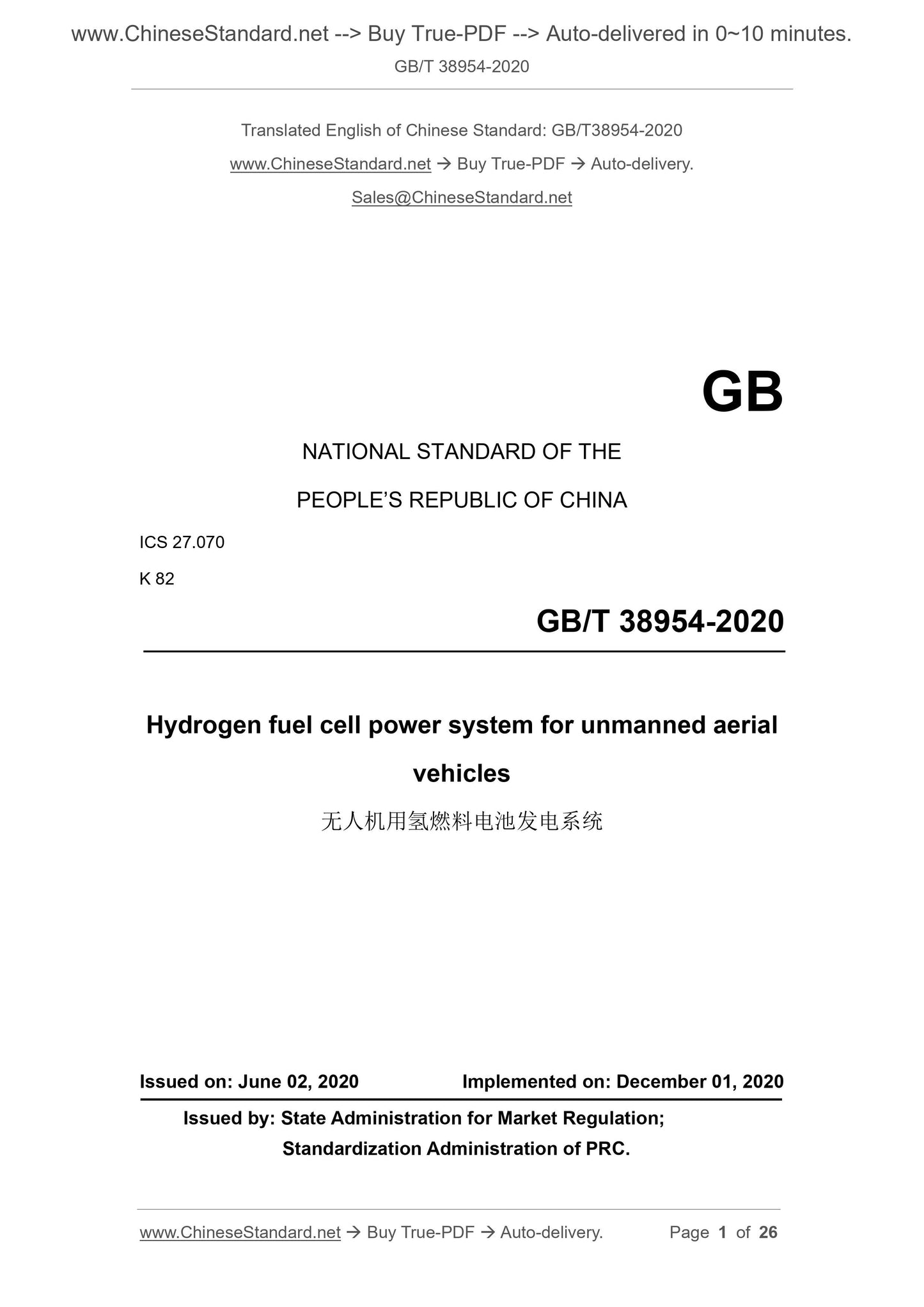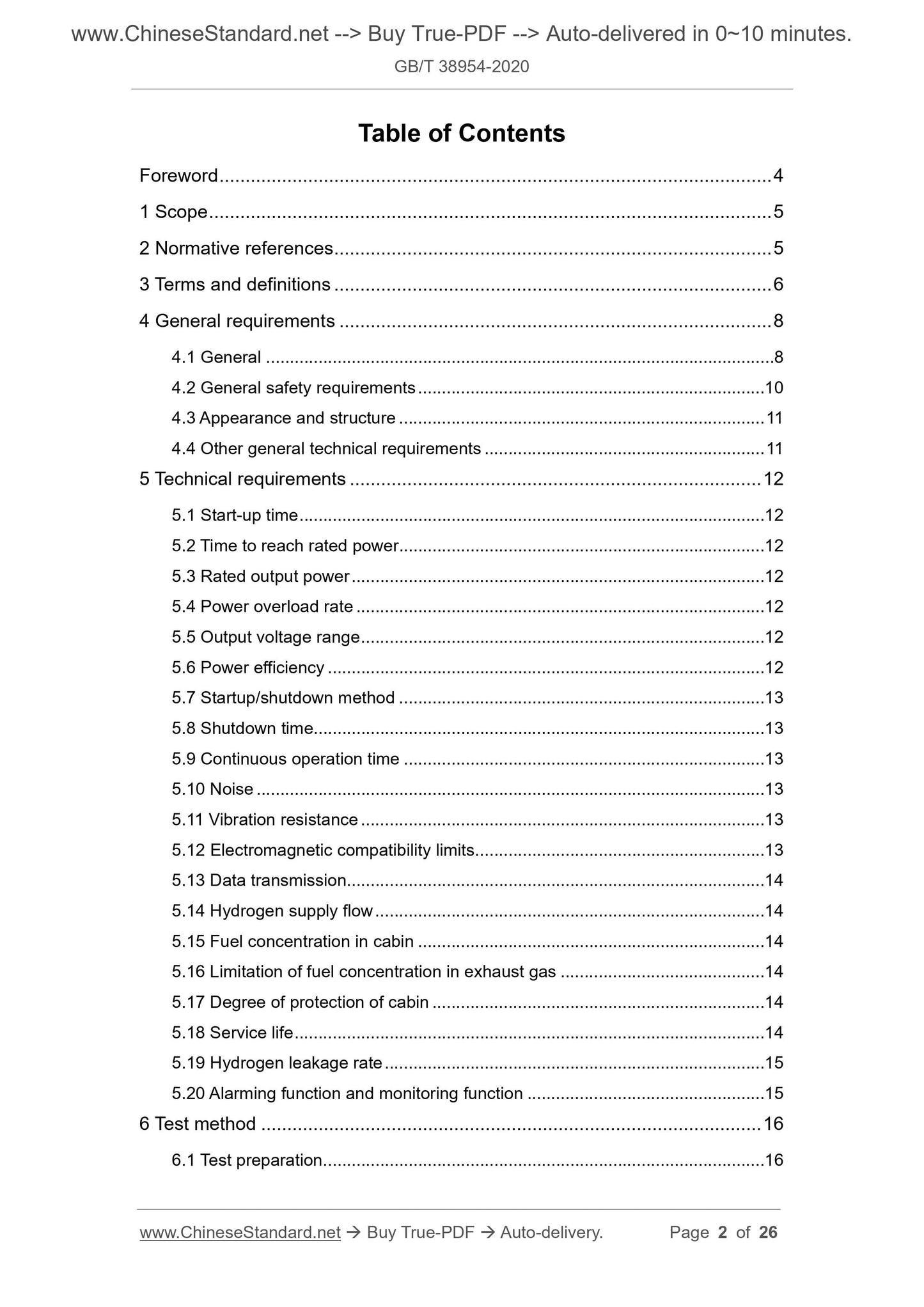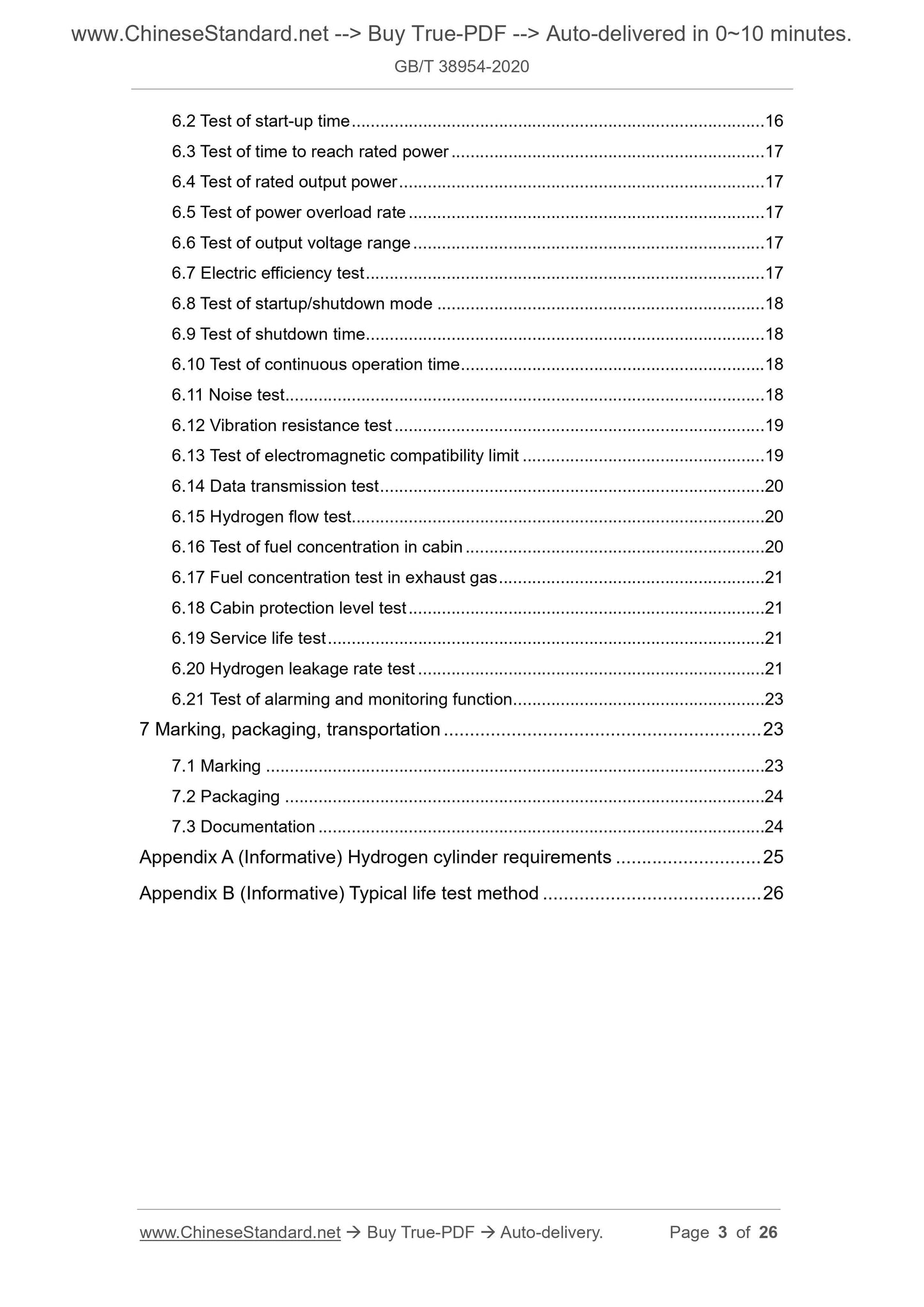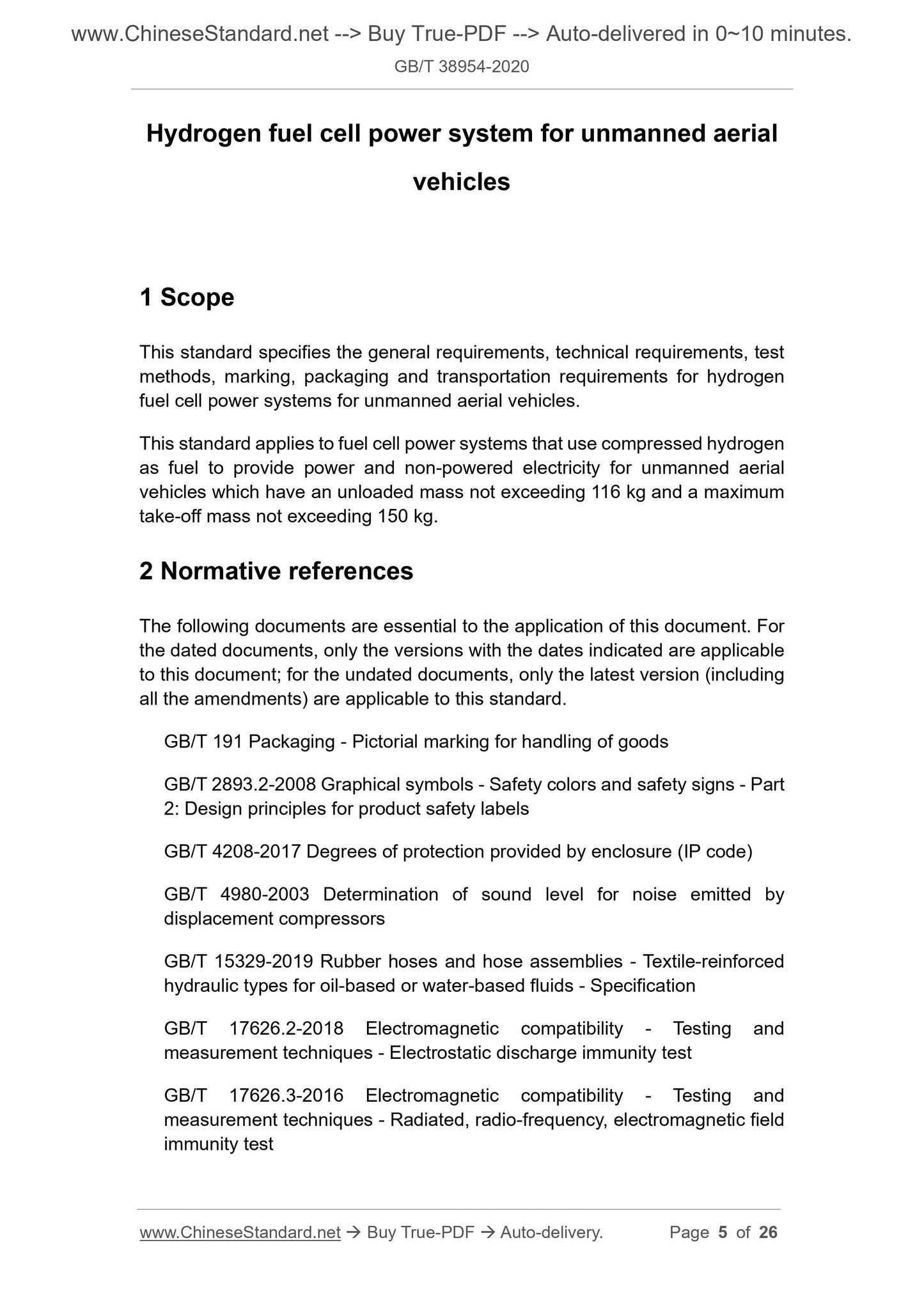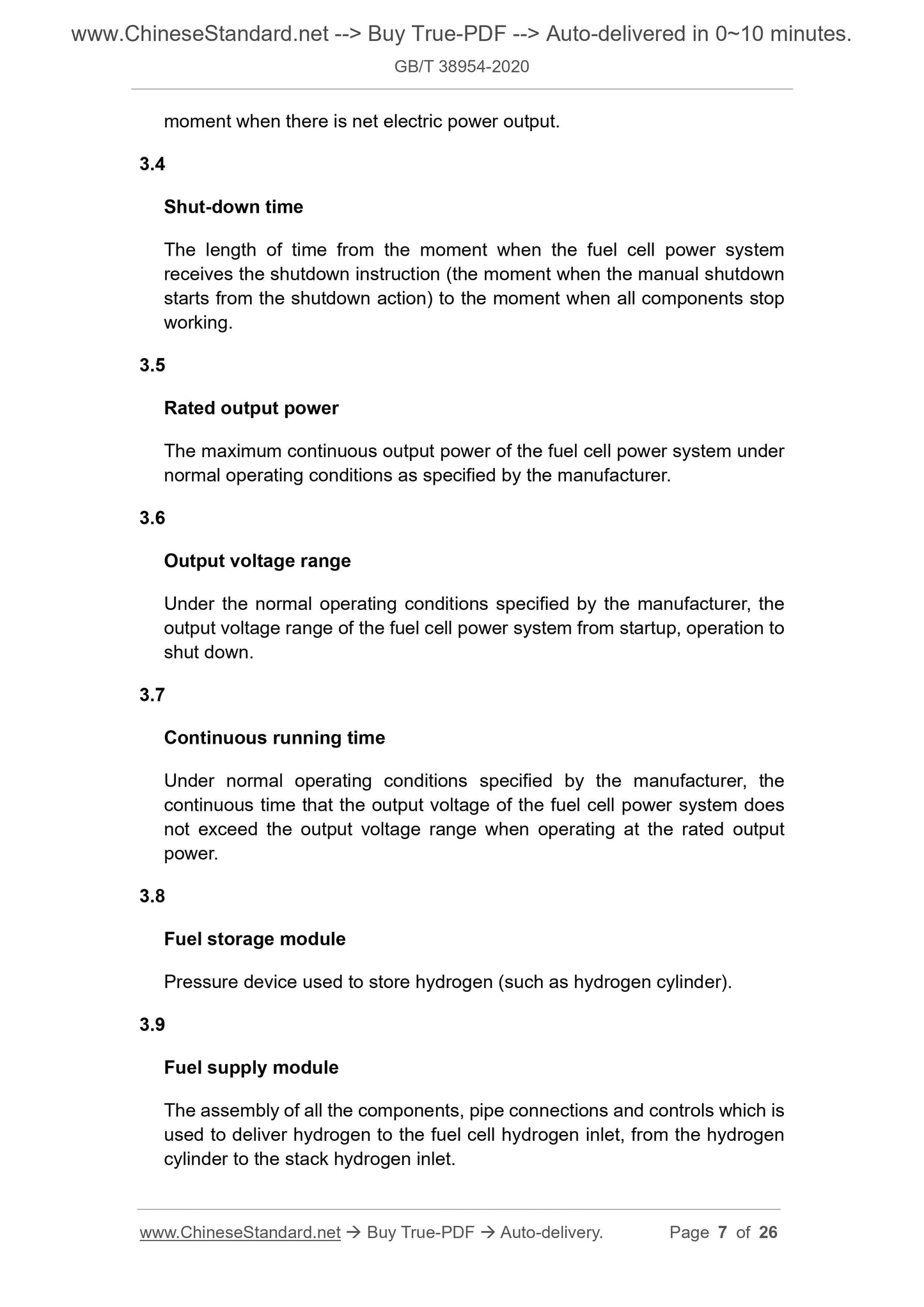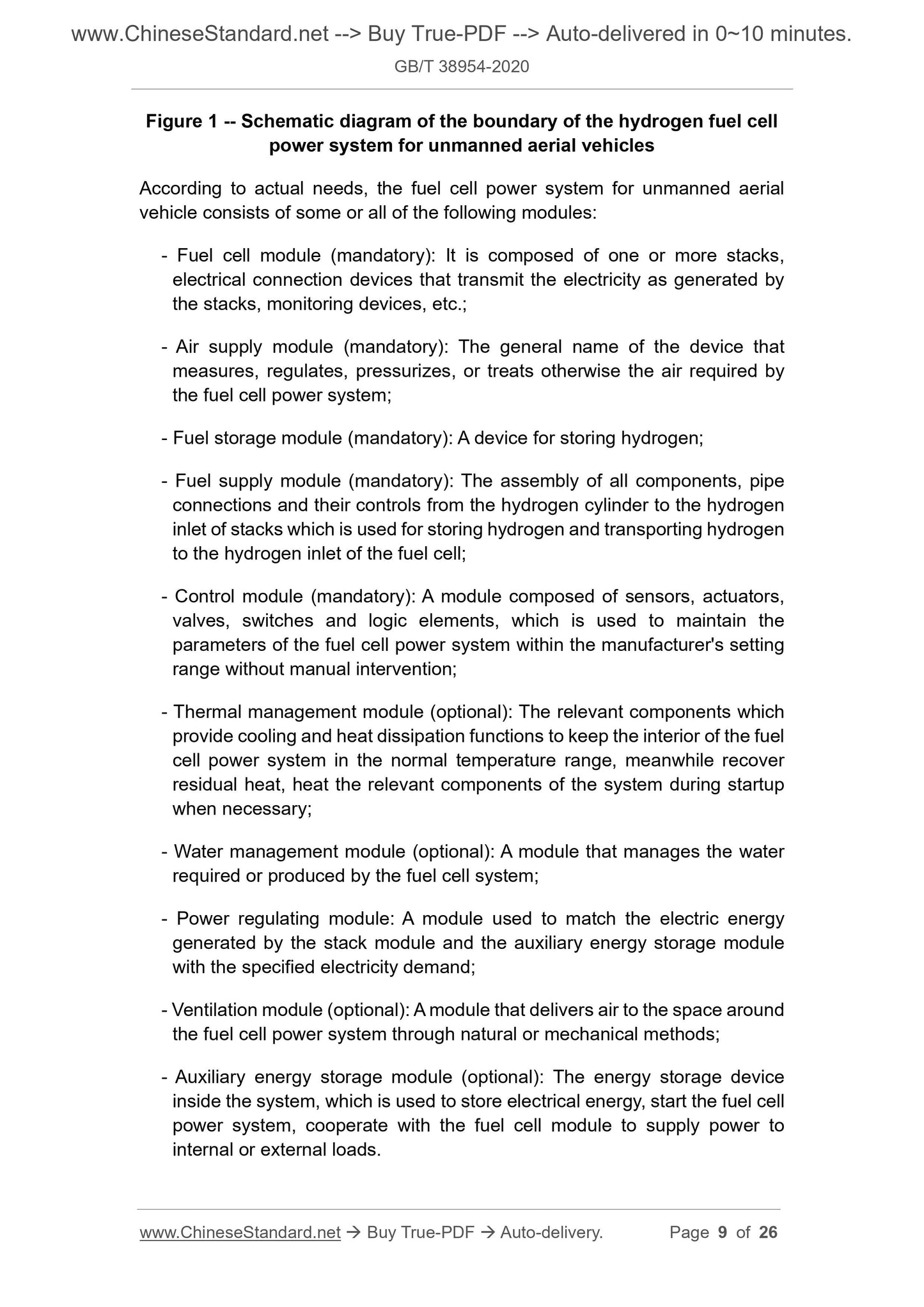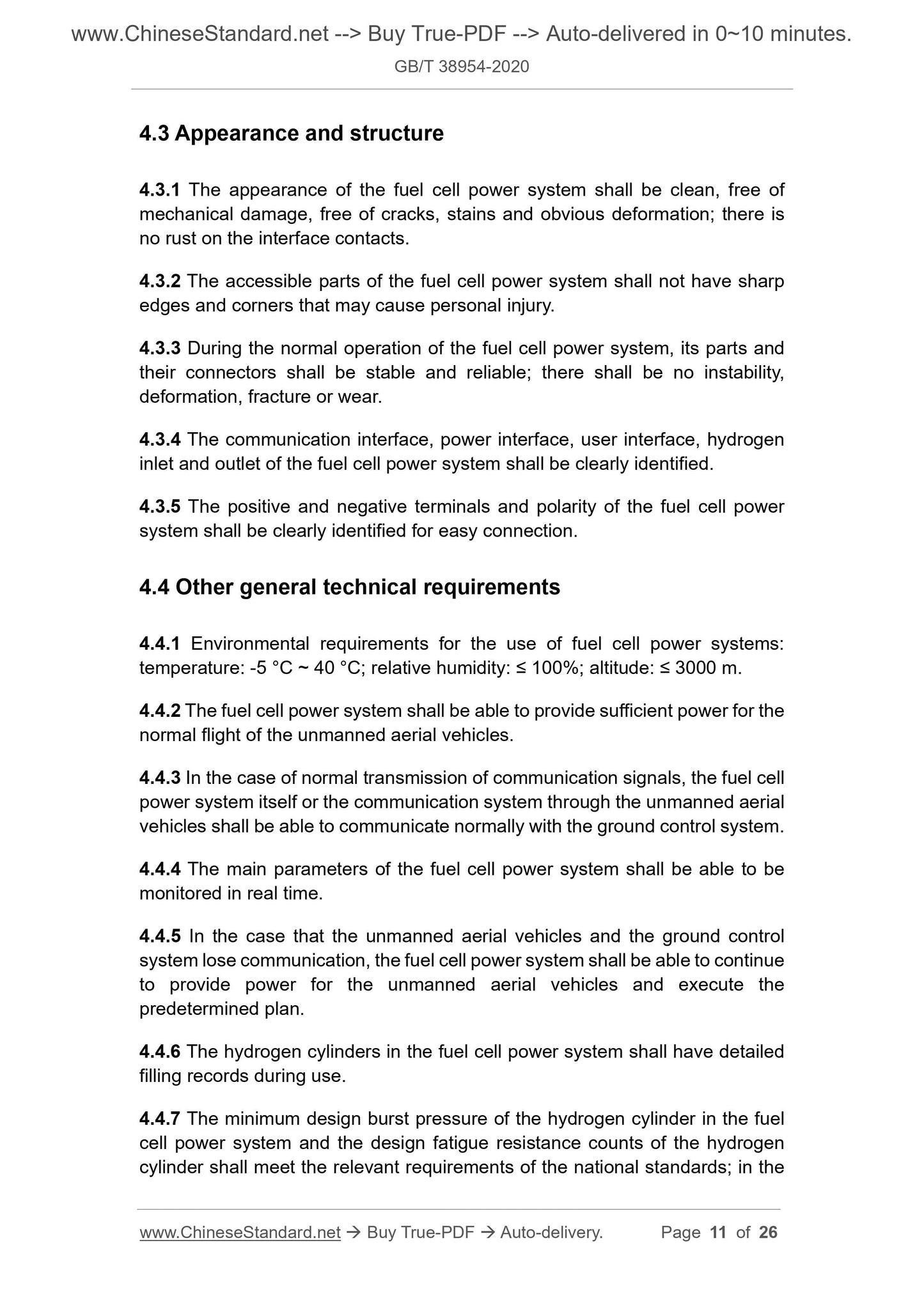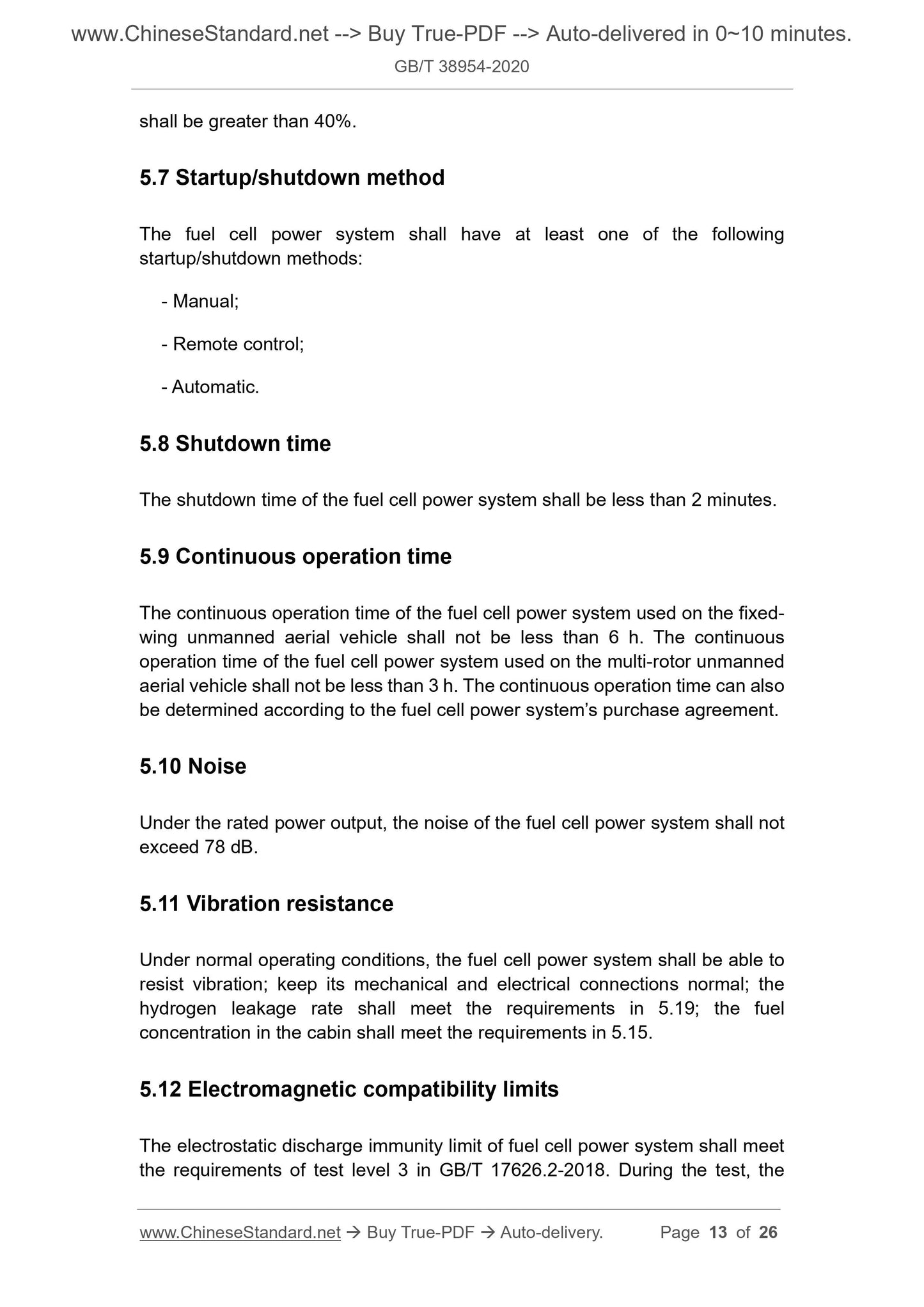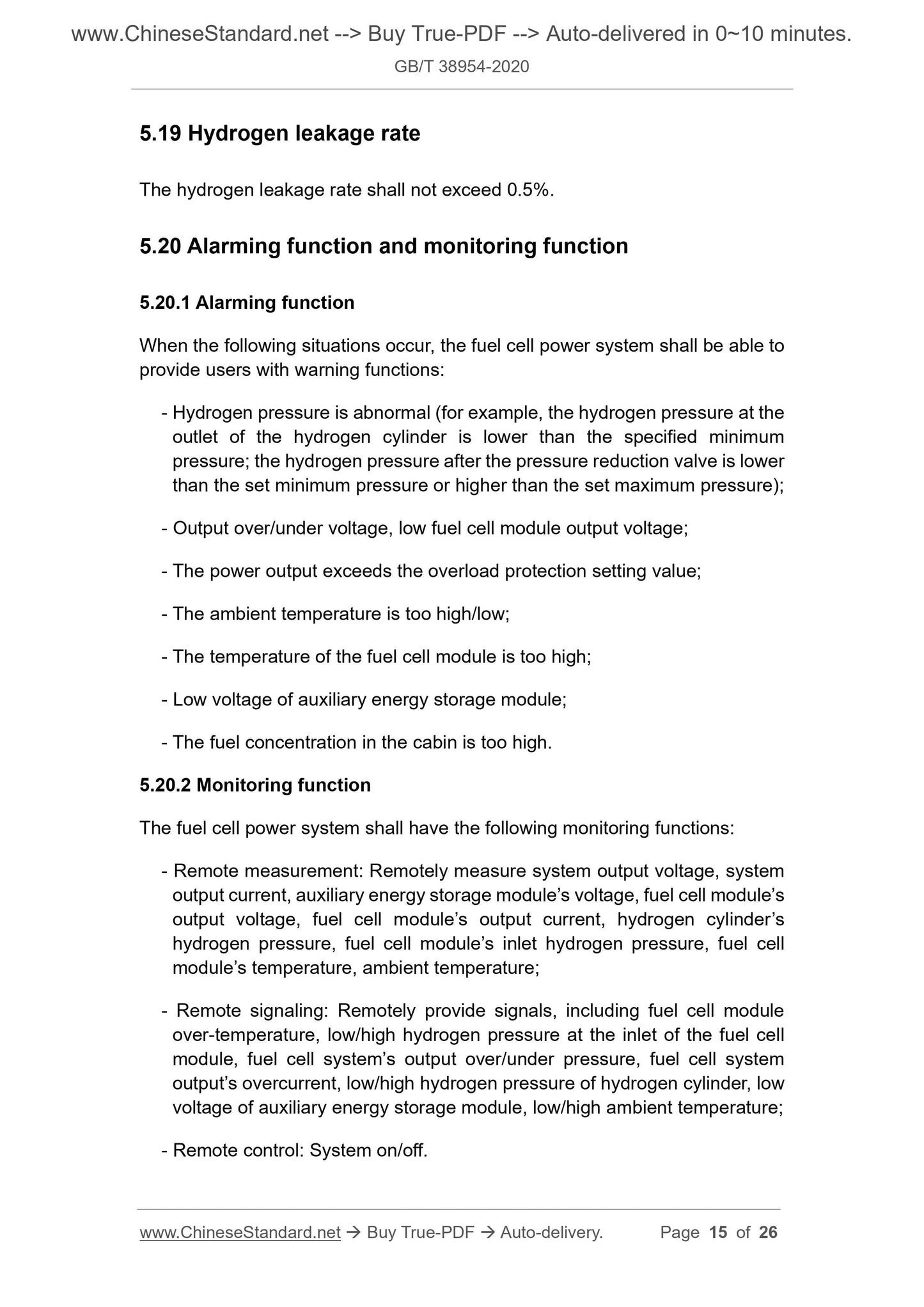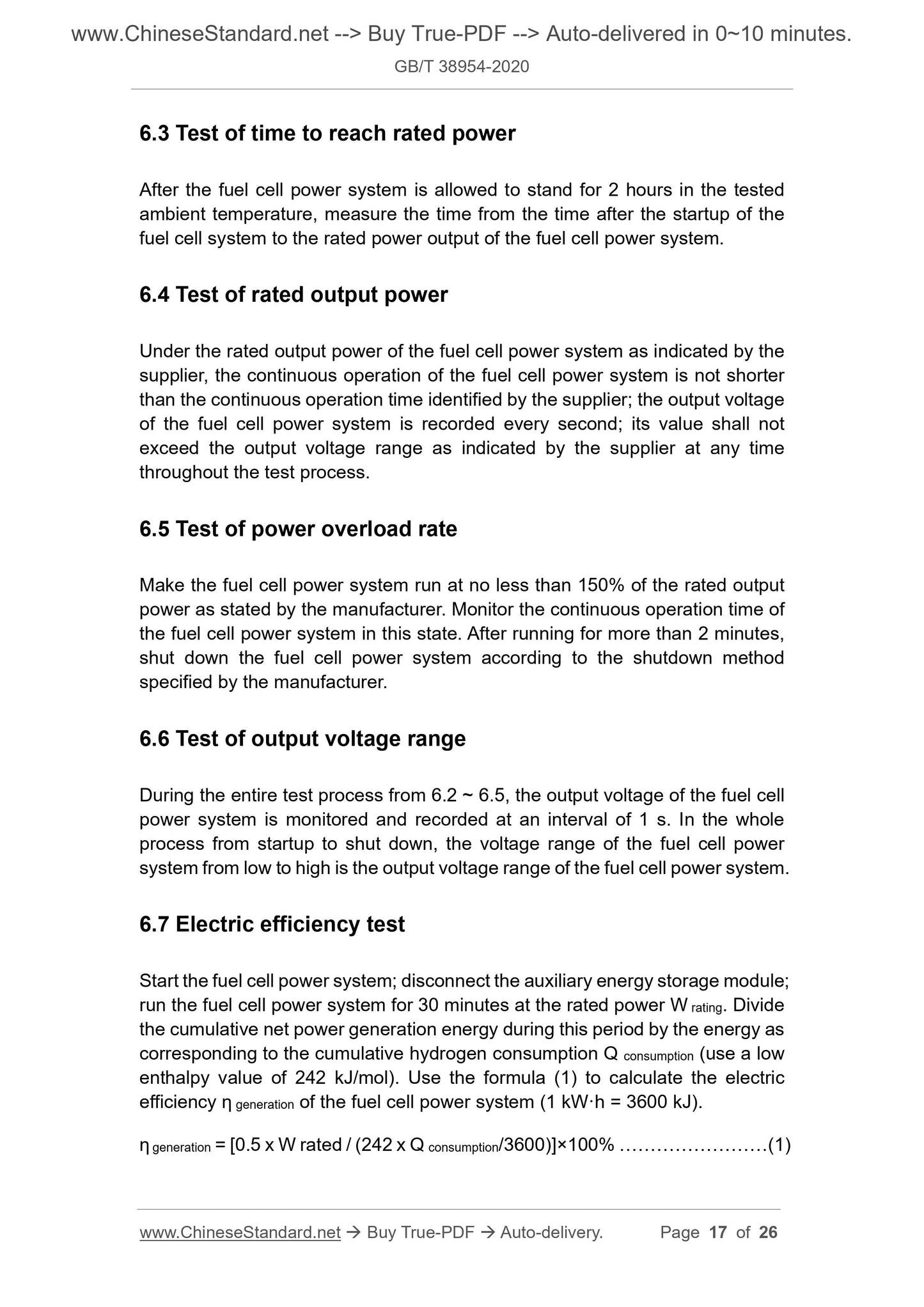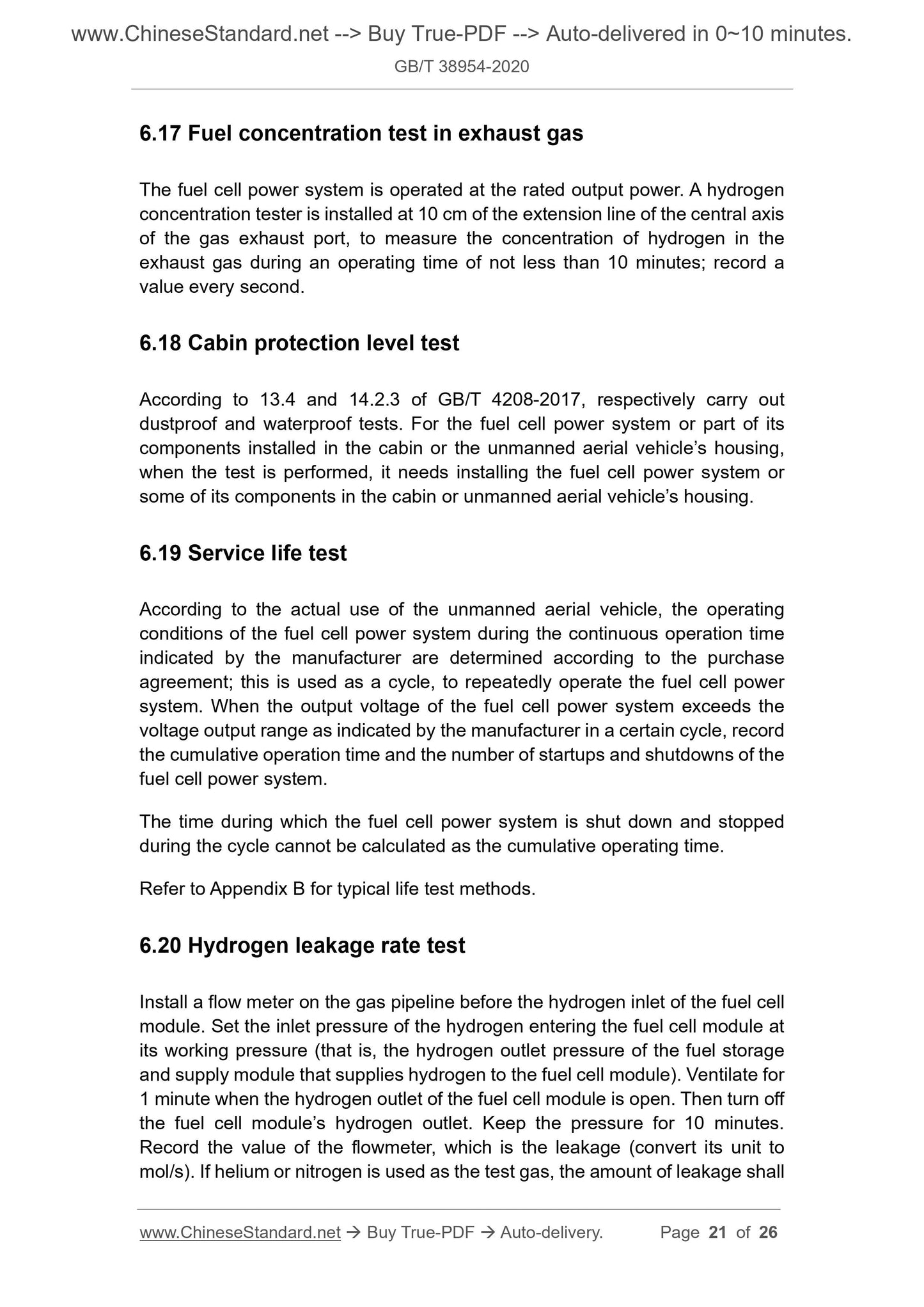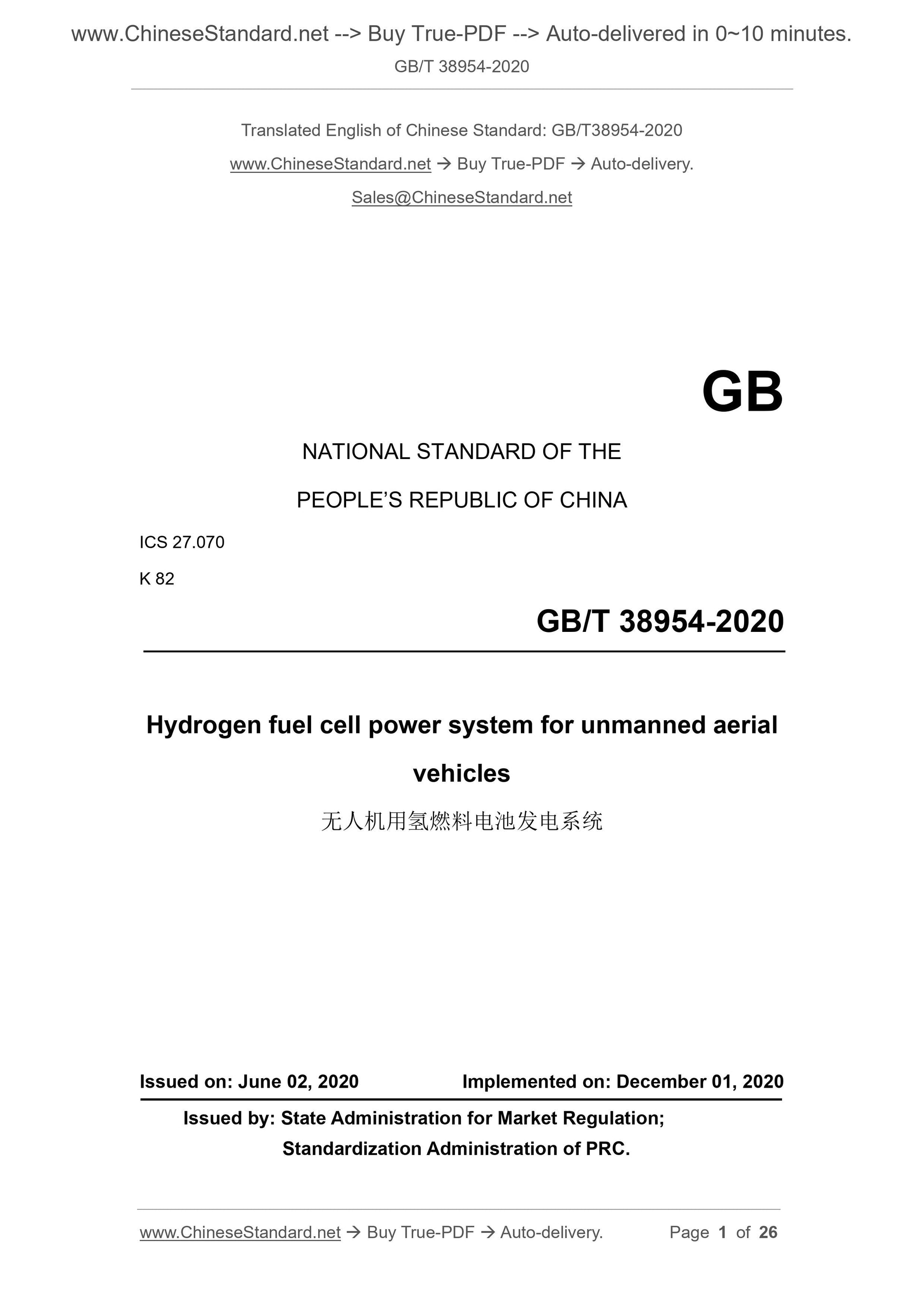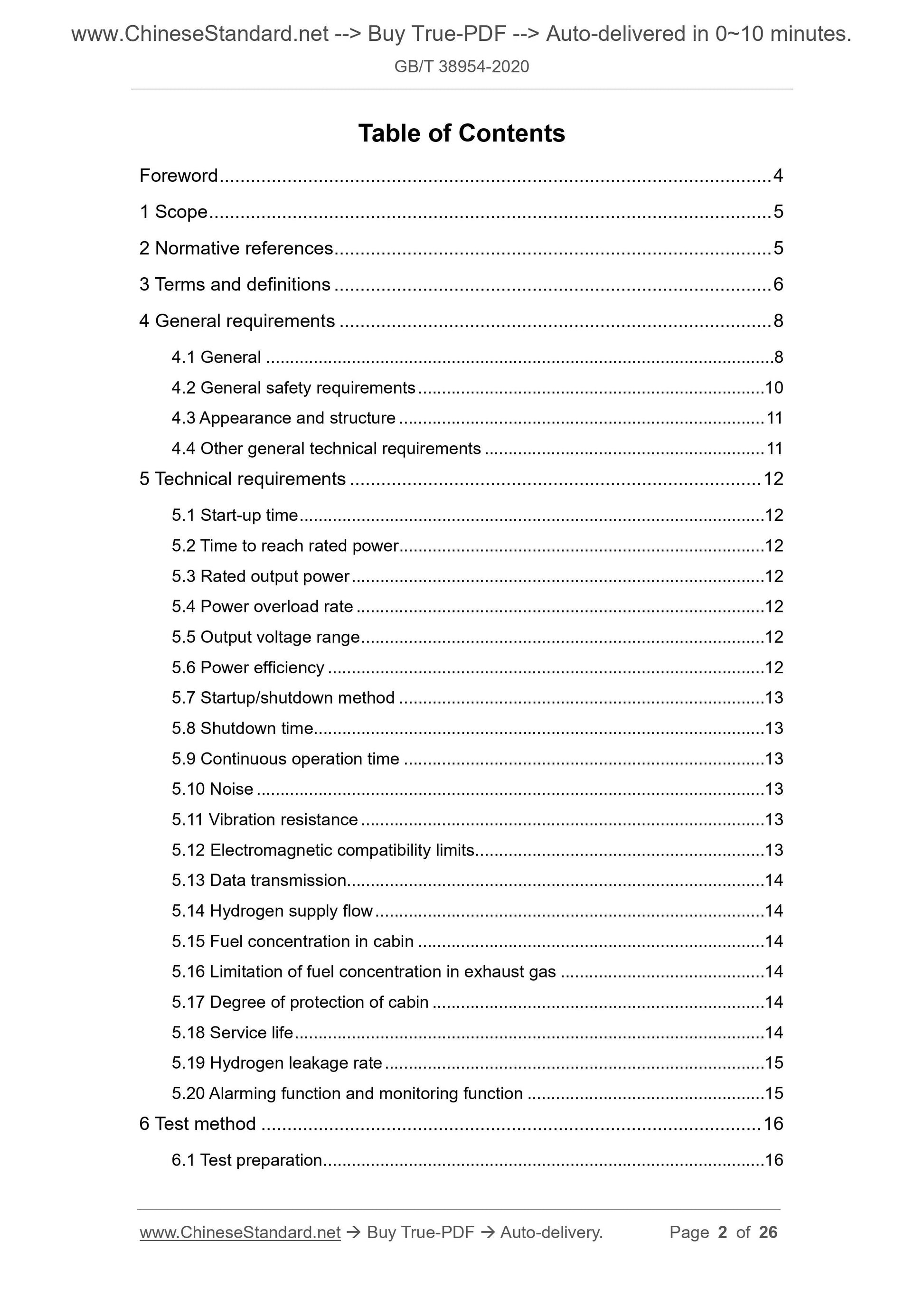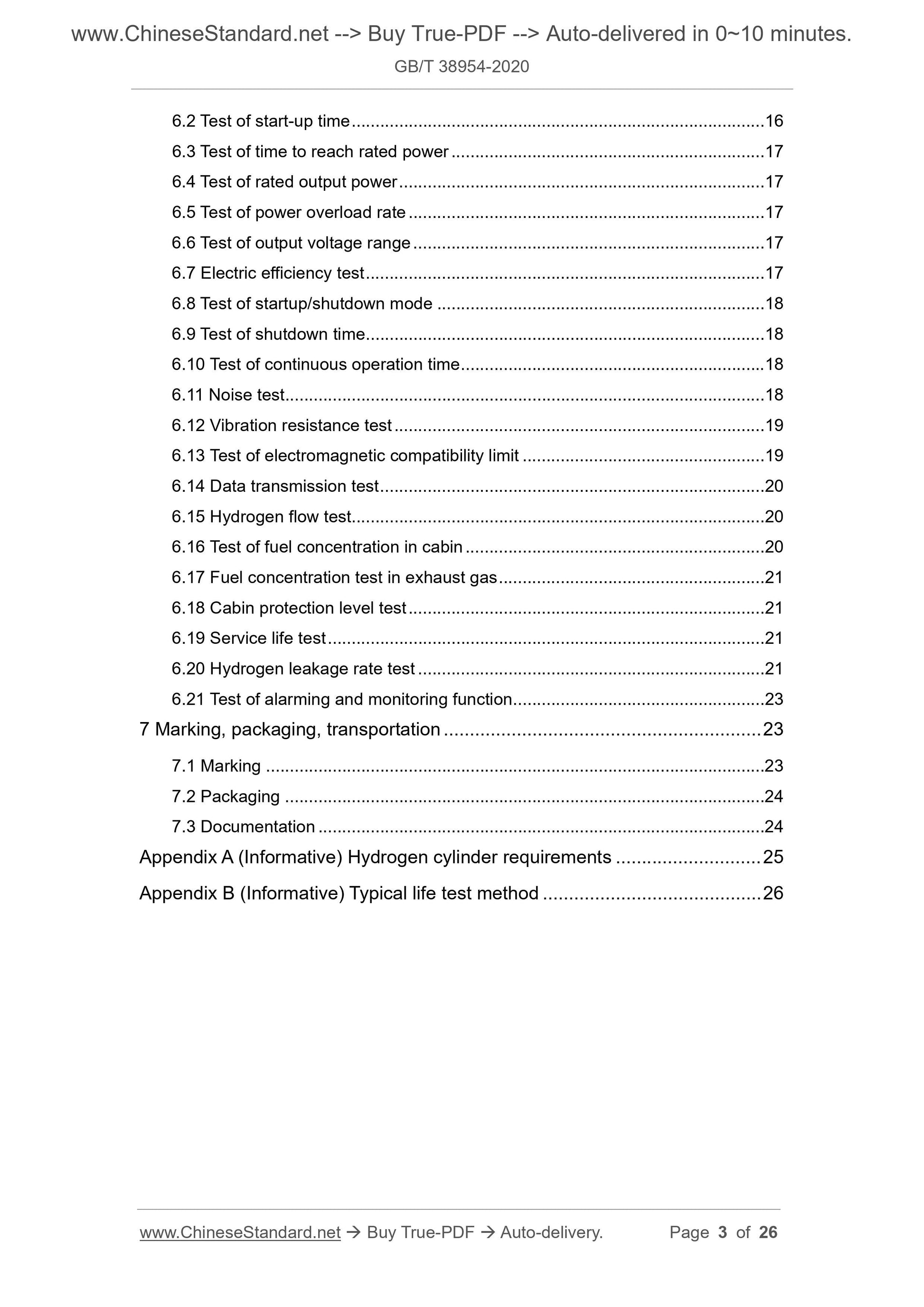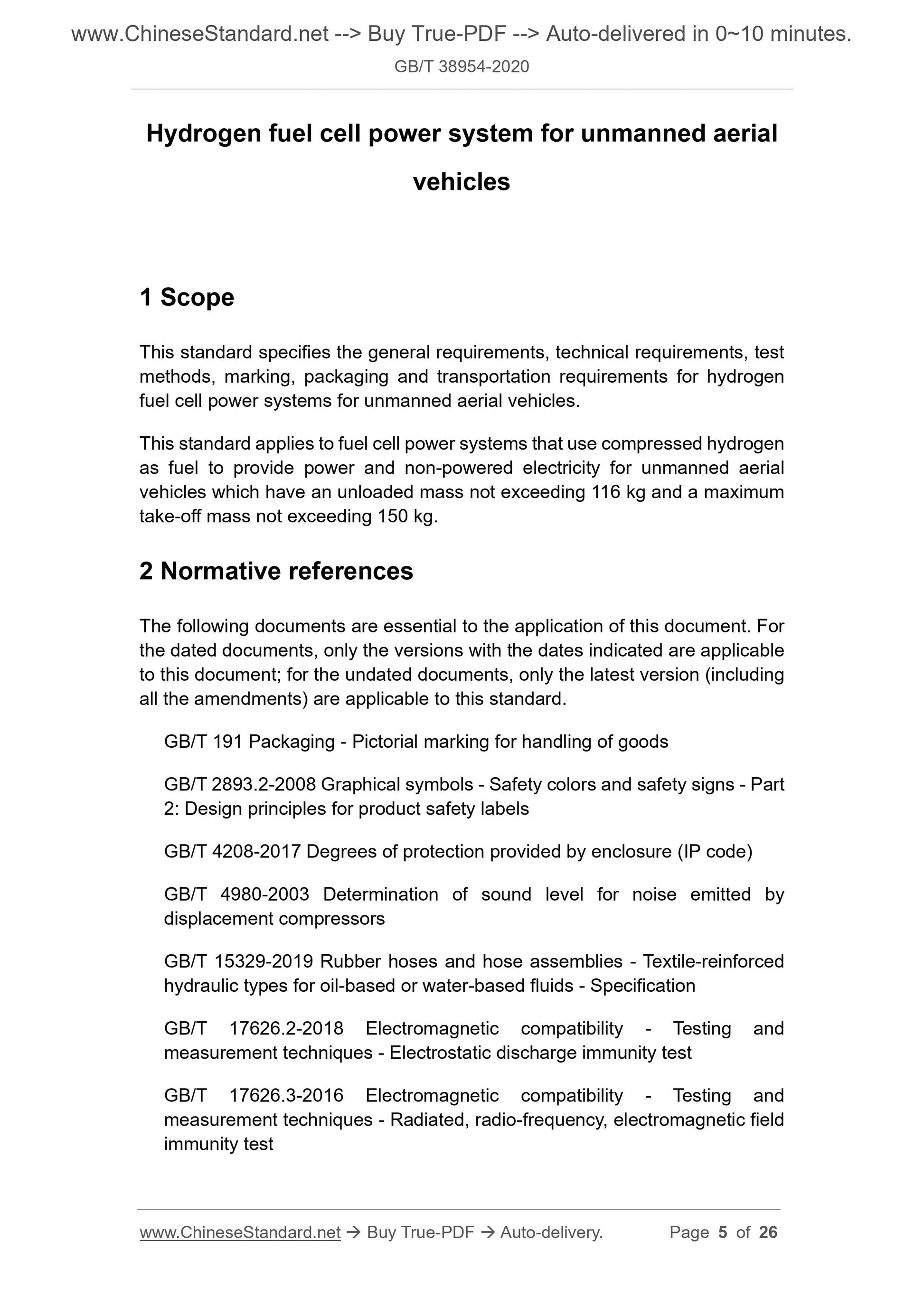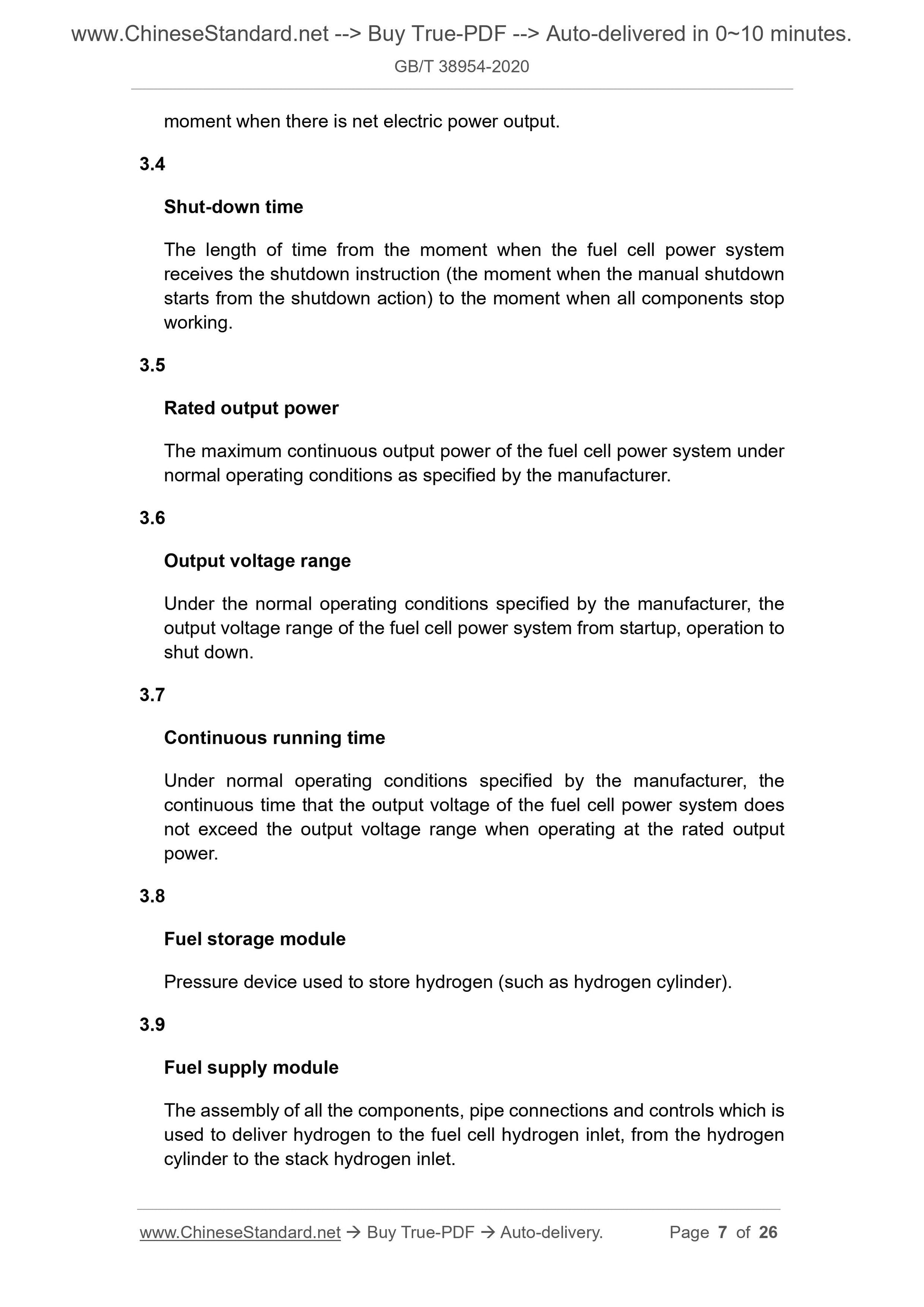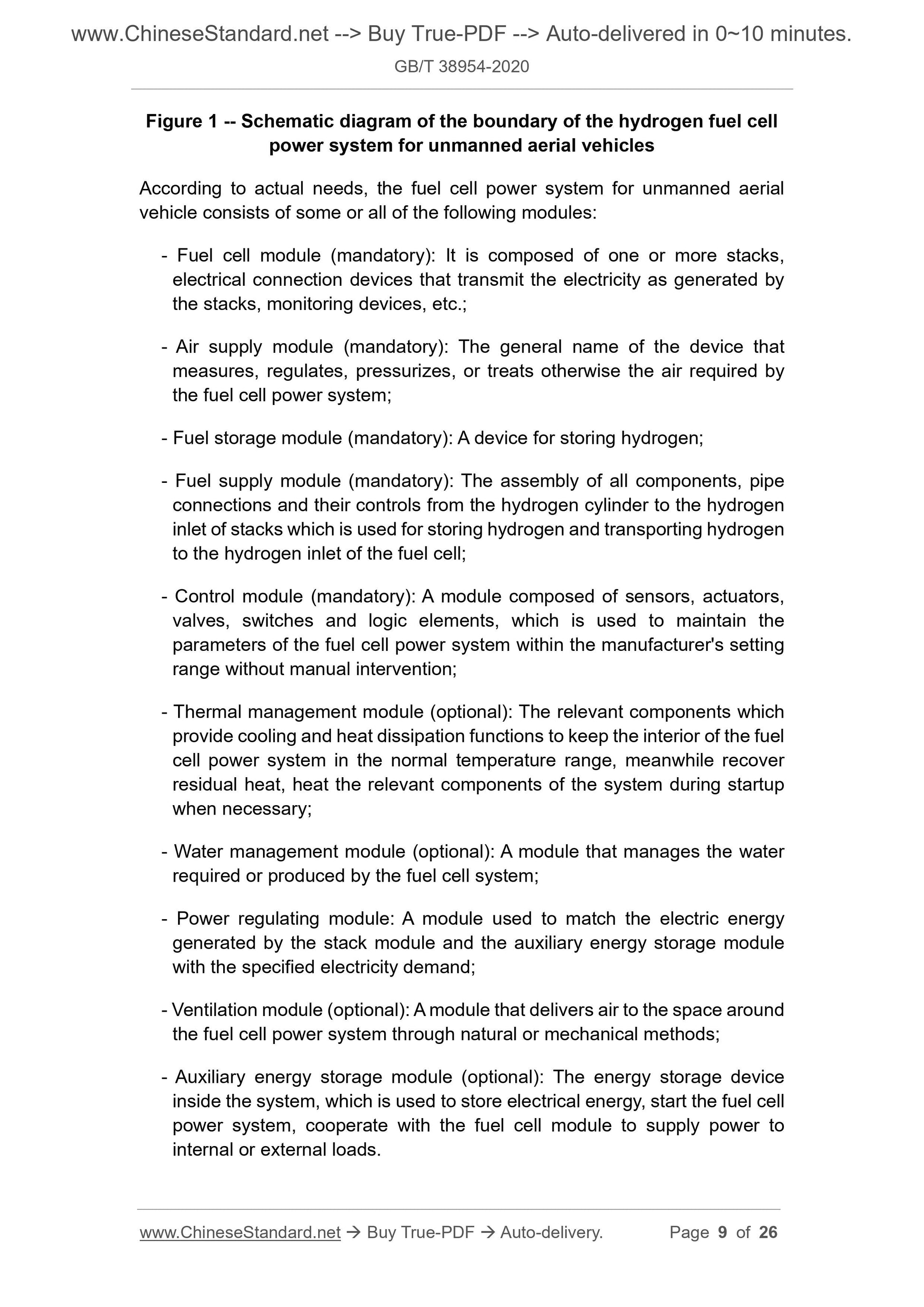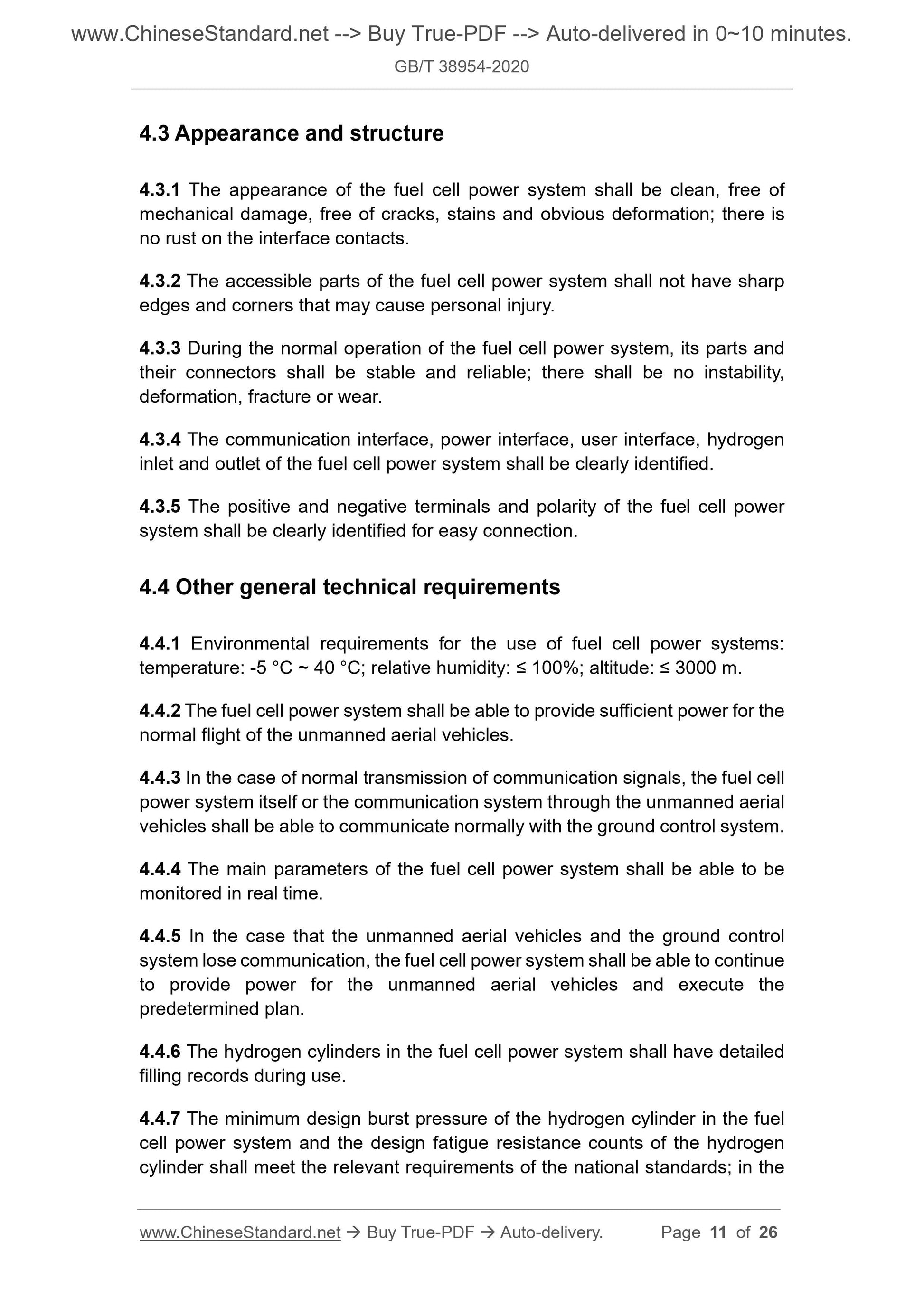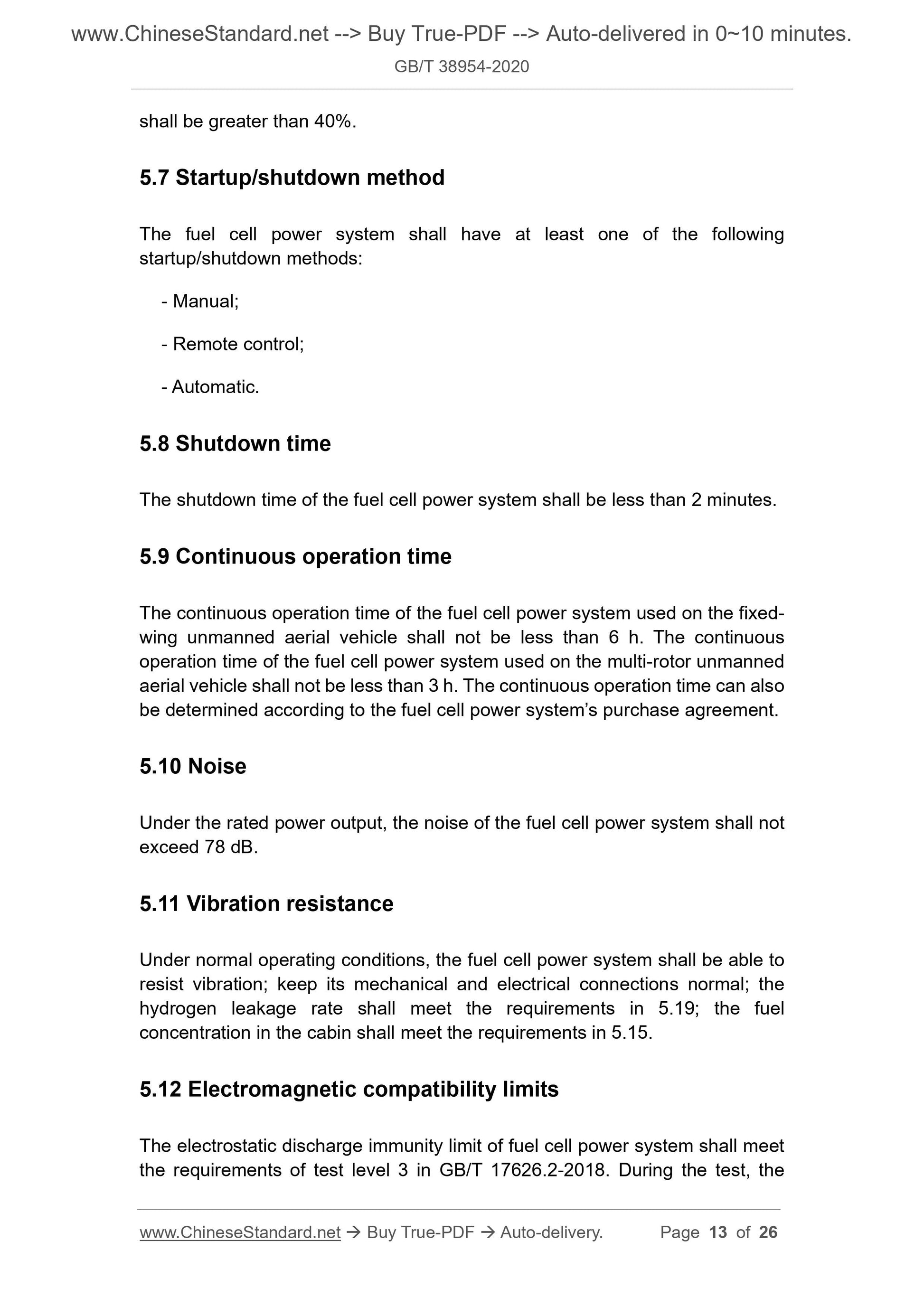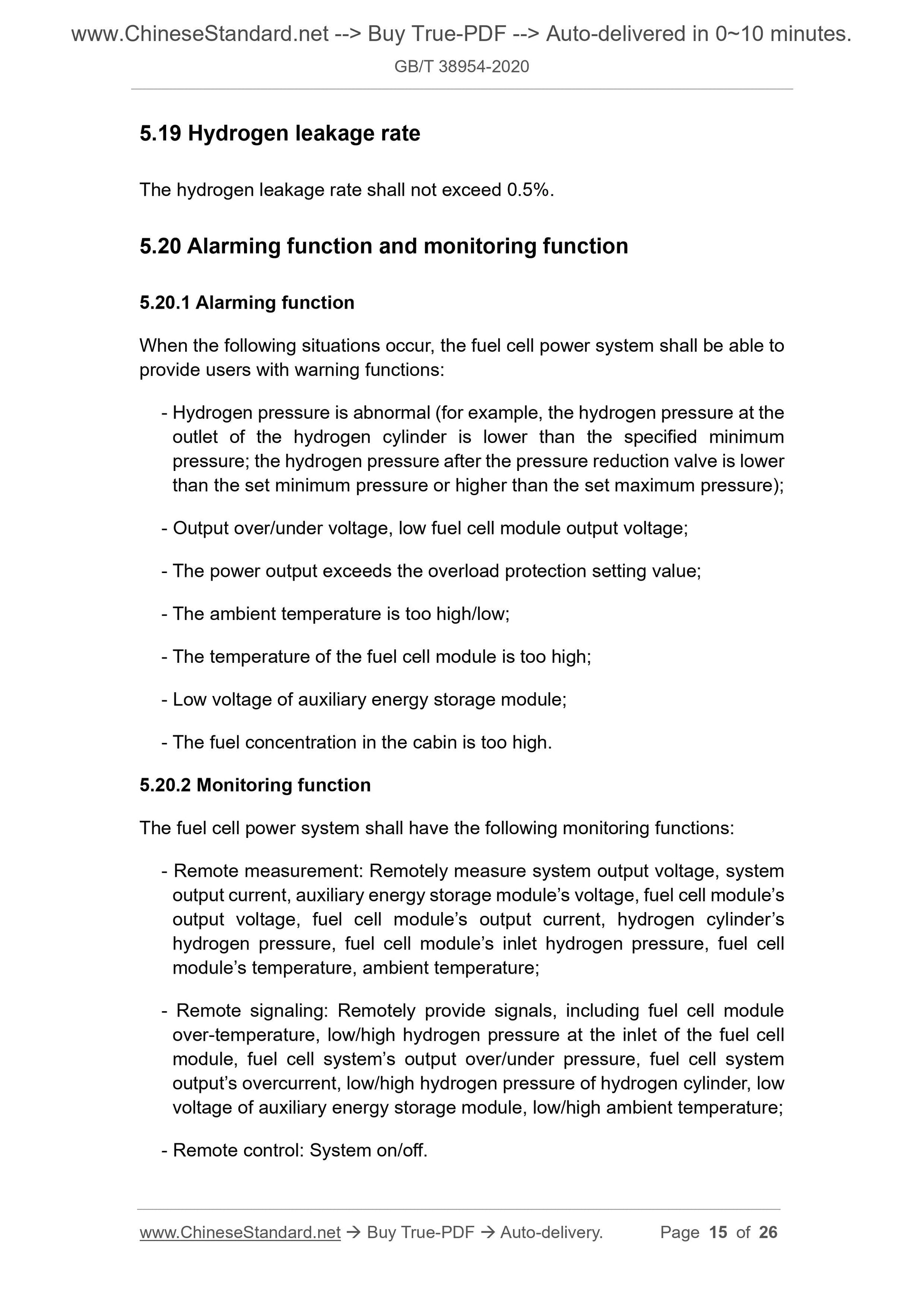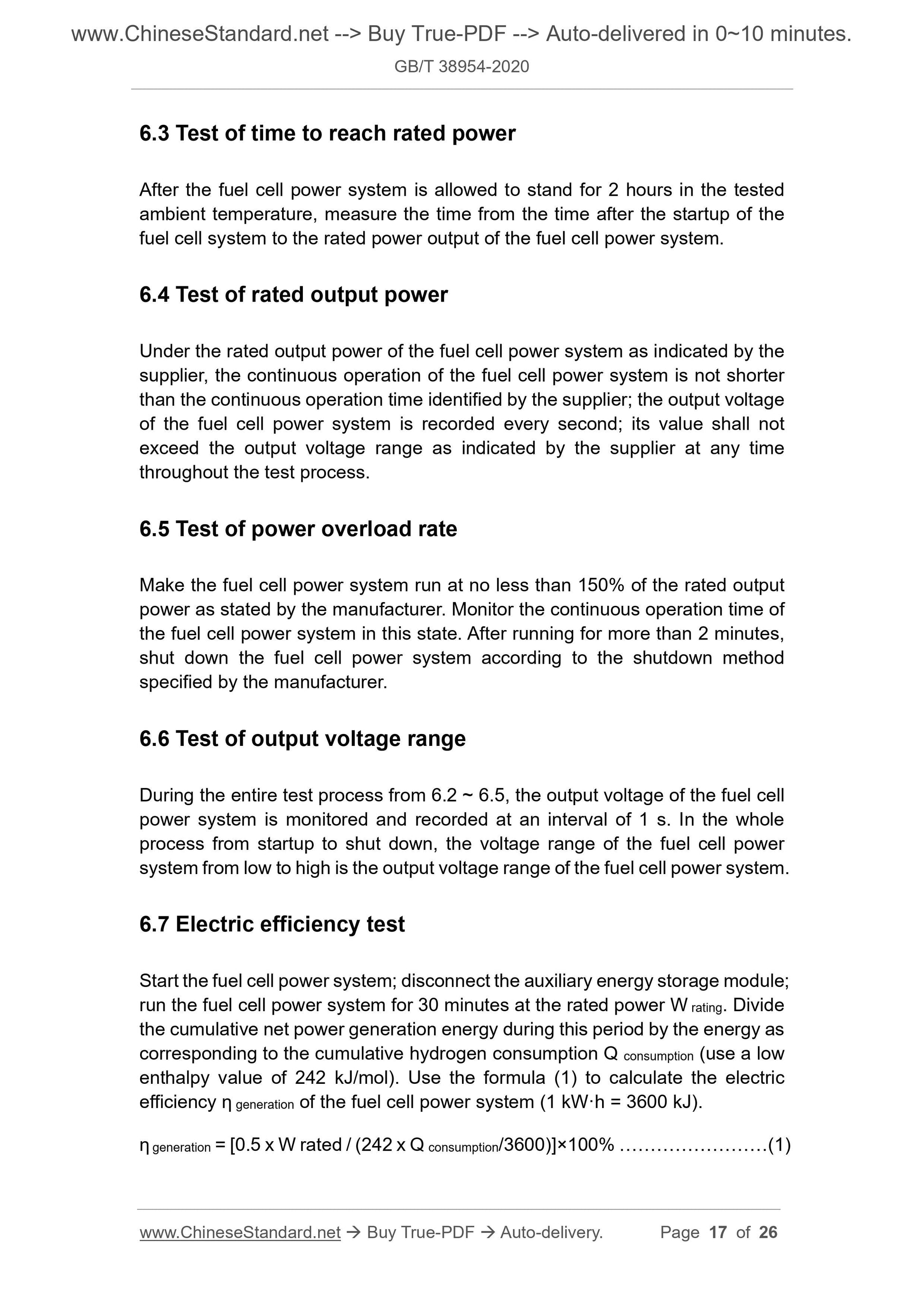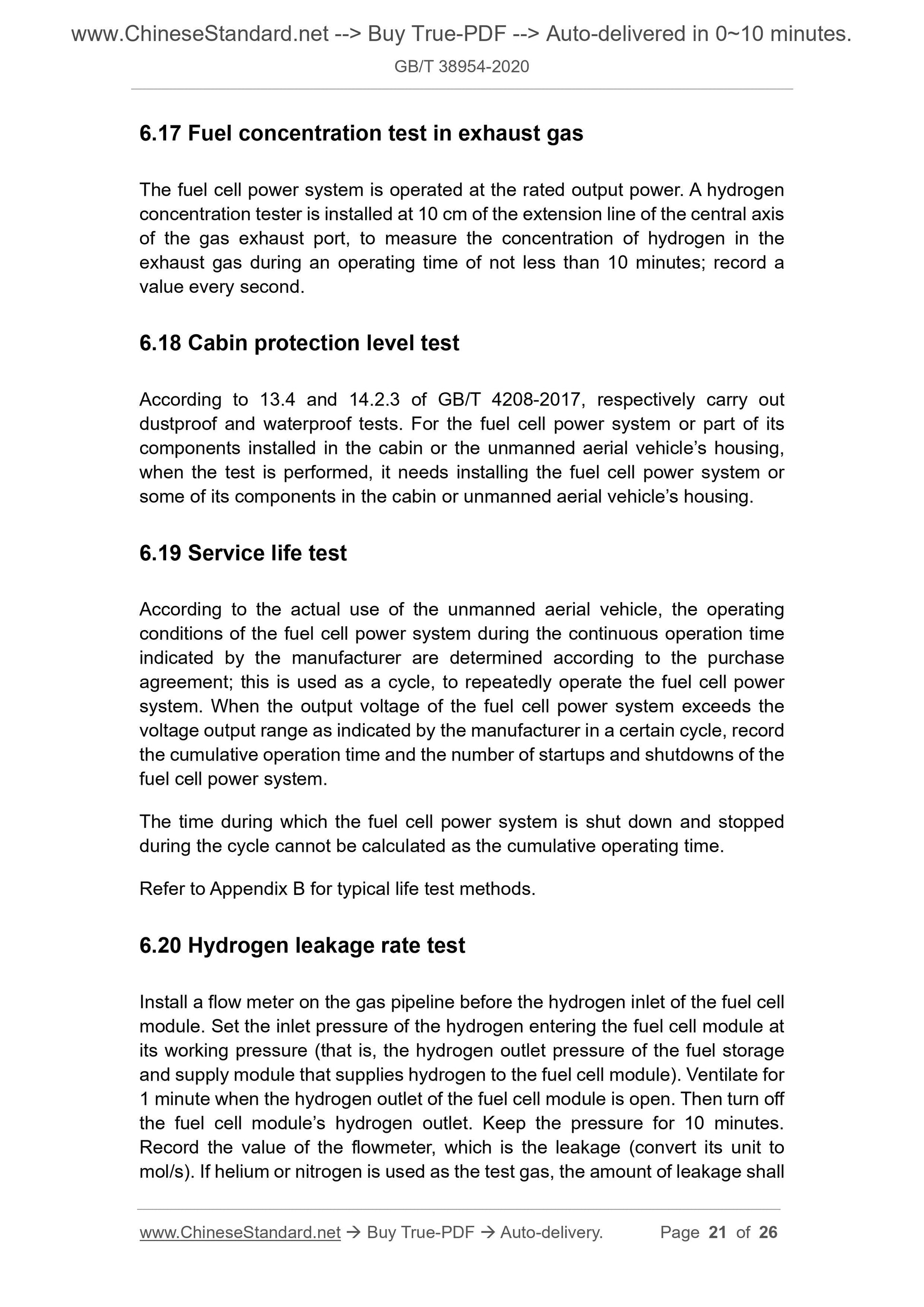1
/
of
11
www.ChineseStandard.us -- Field Test Asia Pte. Ltd.
GB/T 38954-2020 English PDF (GB/T38954-2020)
GB/T 38954-2020 English PDF (GB/T38954-2020)
Regular price
$245.00
Regular price
Sale price
$245.00
Unit price
/
per
Shipping calculated at checkout.
Couldn't load pickup availability
GB/T 38954-2020: Hydrogen fuel cell power system for unmanned aerial vehicles
Delivery: 9 seconds. Download (and Email) true-PDF + Invoice.Get Quotation: Click GB/T 38954-2020 (Self-service in 1-minute)
Newer / historical versions: GB/T 38954-2020
Preview True-PDF
Scope
This standard specifies the general requirements, technical requirements, testmethods, marking, packaging and transportation requirements for hydrogen
fuel cell power systems for unmanned aerial vehicles.
This standard applies to fuel cell power systems that use compressed hydrogen
as fuel to provide power and non-powered electricity for unmanned aerial
vehicles which have an unloaded mass not exceeding 116 kg and a maximum
take-off mass not exceeding 150 kg.
Basic Data
| Standard ID | GB/T 38954-2020 (GB/T38954-2020) |
| Description (Translated English) | Hydrogen fuel cell power system for unmanned aerial vehicles |
| Sector / Industry | National Standard (Recommended) |
| Classification of Chinese Standard | K82 |
| Classification of International Standard | 27.070 |
| Word Count Estimation | 18,145 |
| Date of Issue | 2020-06-02 |
| Date of Implementation | 2020-12-01 |
| Issuing agency(ies) | State Administration for Market Regulation, China National Standardization Administration |
Share
